
All categories
Featured selections
Trade Assurance
Buyer Central
Help Center
Get the app
Become a supplier

(134496 products available)












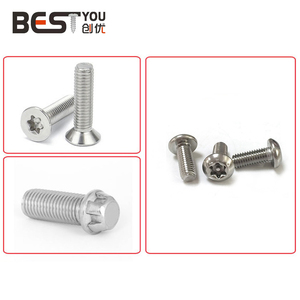











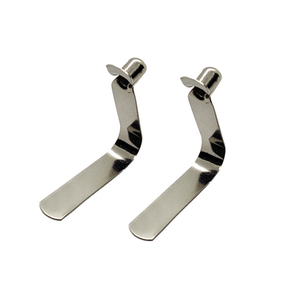



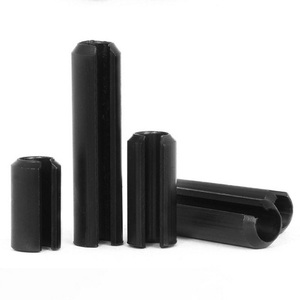

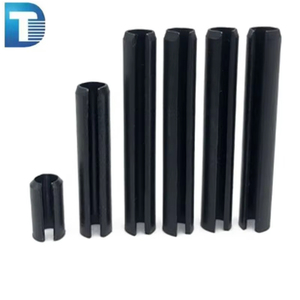

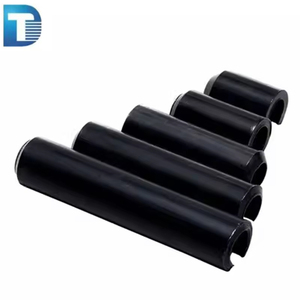

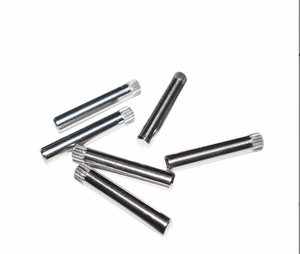



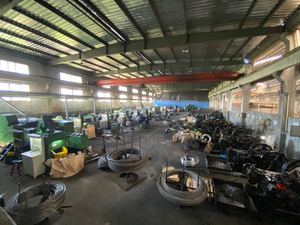






Stainless headless pins are widely used in various applications, including industrial and commercial manufacturing and repairs. They come in different types to suit specific purposes, such as preventing corrosion, durability, and strength.
Standard headless pin
The standard type of pin is intended for general use. It is made from solid material, usually steel, for increased durability and strength. Standard headless pins are used in a variety of applications where precise fixing is required. Some of these include mechanical assembly, electronics, and furniture manufacturing. These pins are suitable for most uses where an easy method of insertion and minimal resistance to removal is required.
Threaded headless pin
Threaded headless pins feature threaded ends that allow for secure attachment. These pins are necessary in applications where components need to be bolted or connected firmly. They allow for a strong, permanent assembly that can withstand high load or stress. Threaded headless pins are most commonly used in mechanical engineering, automotive, or aerospace applications. In these fields, reliability and long-term durability are essential.
Tapered headless pin
Tapered headless pins are slightly conical in shape, usually used for precise aligning of components or making a joint connection. These pins are commonly used in woodwork, metal fabrication, and machinery assembly. They improve the accuracy of the aligned part and make it easier to insert into tightly fitted holes.
Split headless pins
Split headless pins, also known as cotter pins, have a split or notch at one end. This allows the pin to be bent around objects after insertion, securing them in place. They are mainly used to prevent loosening of bolts, screws, or other fasteners in mechanical applications. Such use is common in automotive, agricultural, and heavy machinery fields.
Hollow headless pins
As the name suggests, hollow headless pins have a hollow shaft. They are lighter in weight but relatively strong. They are most suitably used in applications with structural components or assemblies where reducing weight is considered highly essential. These are often used in aerospace, transportation, and other applications where weight factors determine the engineering outcome.
Headless pins enjoy great popularity because of their durability. They are engineered to offer long-lasting performance, even in more demanding conditions. Some of their key factors include:
Material strength
The durability of headless pins, particularly stainless steel pins, is intimately and directly related to the material used in the manufacturing. Stainless steel is usually an alloy containing chromium, nickel, and a few other elements. This gives the steel corrosion resistance, tensile strength, and more excellent toughness. These properties make them function well in resisting wear, deformation, and breakage.
Corrosion resistance
Headless pins come stainless, making them extremely resistant to corrosion and rust formation. It allows them to withstand exposure to moisture, extreme temperatures, and various chemicals. These conditions would normally lead to significant degradation in lesser materials. This factor significantly affects their durability, increasing their use in outdoor, marine, and industrial locations.
Fatigue resistance
Headless pins are engineered to have fatigue resistance, which is the failure caused by repeated load cycles. Materials with high elasticity and tensile strength withstand many loading and unloading cycles. For this reason, stainless headless pins are particularly suitable for dynamic applications where movement is constant, such as in machinery and automotive components.
Precision engineering
Stainless headless pins are manufactured with tight tolerances. This ensures they fit snugly and securely into the intended components. Due to this, there is even wear and tear on the pin and the parts it interacts with. Great accuracy prevents unnecessary movement, misalignment, or mechanical failure, which can reduce the lifetime of various components.
Load-bearing capacity
Stainless headless pins are designed to bear heavy loads or stresses without bending. Their solid construction and material strength make them suitable for use in heavy machinery, structural assemblies, and even load-bearing applications. They maintain their integrity and functionality in high-pressure environments.
The design of stainless headless pins is intended for efficiency. It enhances ease of use, functionality in multiple applications, and aesthetic appeal. Key design elements include:
Material composition
Stainless headless pins are commonly made from stainless steel, a type of steel alloy containing around 10.5% chromium and nickel. The addition of chromium gives the steel its characteristic of corrosion and rust resistance. This makes headless pins strong, durable, and highly resistant to wear and tear, making them suitable for various environments, even adverse ones.
Form factor
Headless pins have a simple cylindrical shape without a head on one end. This design allows easy insertion into drilled holes or through holes in two or more fixed objects. Without the head, the pins usually provide a sleeker, more minimalist appearance. It is also useful in more confined spaces or tight fittings, where a standard pin would be more challenging to insert or remove.
Screw-threaded or knurled design
Some headless pins come fitted with screw-threaded portions or knurled bases. They improve grip and twisting to enhance pin insertion or removal. Screw-threaded headless pins are particularly useful in components that require a more robust, secure fastening. Such fastenings are critical in mechanical equipment or aerospace systems. Knurled headless pins provide for easier manual adjustments without special tools. It makes them ideal for prototypes or equipment needing frequent maintenance.
Sizing and length options
Headless pins normally come in various lengths and diameters. These size variations allow for their usage in multiple applications. The size of the pin to be used is determined primarily by the thickness of the material to be joined and the load it will carry. Common lengths range from about 10 mm to 50 mm and diameters from 2 mm to 5 mm. This range makes them suitable for small electronic devices and heavy industrial machinery.
Tolerance and finish
Modern design allows headless pins to be manufactured with high tolerance and finish. This ensures proper fitting and aesthetic appeal. High tolerance is crucial in precise mechanical or structural assemblies, where minimal misalignment causes equipment failure. On the other hand, the smooth finish minimizes damage, for example, on fingers during handling, and on the mating parts of the equipment.
Industrial manufacturing
Stainless headless pins are commonly fixed elements in machinery. Because they are strong, corrosion-resistant, and fatigue-resistant, they enjoy use in areas with heavy loads, exposed to chemicals or moisture, and areas where movement is constant. They are critical for maintaining the mechanical integrity of equipment and preventing the misalignment or failure of critical components in the manufacturing process.
Aerospace applications
The dependence on weight goes a long way in making the aerospace industry pay particular focus on the materials they use. It is where no material is too light to reduce weight. They also have to carry very strong components. That is why stainless headless pins are used: they are lightweight but very strong and durable. Common applications include fastening parts in aircraft, engines, and other equipment that needs to be lightweight yet incredibly strong and durable.
Marine industries
Marine industries have to deal with pin corrosion. Therefore, they use stainless headless pins that are corrosion-resistant and suitable for marine applications, such as boat fittings, rigging hardware, or mooring equipment. These pins are strong and resistant to corrosion from water, salt, and weather elements, making them very ideal for the marine environment.
Automotive applications
Automotive industries also experience the problem of parts becoming corroded due to the chemicals, moisture, and debris they are exposed to. Stainless headless pins are typical for securing engine components, suspension systems, and bodywork fittings. Their durability, resistance to corrosion, and ability to bear heavy loads make them critical for ensuring the vehicle's safety and performance and extending its lifespan.
Furniture assembly
In the furniture industry, stainless headless pins are used for joining wood pieces and other materials. Their smooth finish makes the end products look good; they are easy to insert, and they make the joined materials very strong. Common applications involve using them in cabinets, chairs, tables, and upholstery frameworks where strength and aesthetics are very critical.
Size and length
Select the proper size and length pin for the application intended. The pin size should match the material thickness to be joined. At the same time, the length should be long enough to go through both materials but not too long, as excess material causes obstruction during use. To ensure a proper fit, consult industry standards or manufacturer specifications to get accurate size details.
Material grade
There are different grades of stainless steel, each appropriate for certain applications. For example, AISI 304 and AISI 316 are the most popular marine-grade stainless steels due to the corrosion of marine and chemical exposure. AISI 303 is normally used for pins that require machinability. Generally, choose a grade that will offer the corrosion resistance required by the specific environment.
Tolerance and finish
Good tolerance ensures the headless pin fits snugly without wobbling or causing misalignment in the equipment assembly. Go for low tolerance pins, especially where precision is critical, such as in aerospace or medical equipment. Likewise, select pins with a smooth finish. It prevents damage to the materials the pin comes in contact with and makes insertion easier.
Headless pin applications
Consider how the stainless headless pins will be used. Some are used in light-duty applications, while others are for heavier loads. Some are for static assembly, while others are for dynamic assemblies, where there is constant movement. For strength or load-bearing capacity, select pins with the required diameter for the application so that they provide sufficient tensile strength to carry the load.
Certifications and standards
To ensure quality and performance, especially in critical industries like aerospace or medical devices, stainless headless pins should conform to international or industry-specific certifications. These include ISO, ASTM, or SAE standards. Such certifications mean the product quality has been standardized and meets required performance criteria for safety and reliability.